Economic development collaborators
Harness Global Talent for Economic Development Collaborators
Improving Collaboration. Accelerating Innovation.
The STEM Research Initiative delivers a flexible tool for accelerating innovation and driving economic growth in the regions and communities you serve.
Helping American businesses and institutions of all sizes tap into a diverse, global talent pool, this program allows non-immigrant STEM experts to work in the U.S. for up to five years– strengthening R&D efforts, developing new technologies and products, and empowering organizations to expand and grow.
For civic agencies and business development groups, the initiative offers a valuable, new strategy for supporting your mission and the populations you serve—creating new jobs and economic opportunities, facilitating stronger collaborations between public and private entities, and nurturing a diverse innovation ecosystem that helps communities across the U.S. prosper.
Official White House Fact SheetSTEM Research Initiative
From startups and Fortune 500 companies to universities, the STEM Research Visa Initiative offers an easier way for entrepreneurs, businesses, and institutions in your community to source talented rese2archers from around the globe. Non-immigrant researchers can legally remain in the U.S. for up to five years, staying at one organization for the entire duration or transferring their J-1 visa between multiple companies and institutions in the areas you serve.

Are My Members’ Businesses Eligible to Host Foreign STEM Researchers?
As long as your members’ businesses are U.S.-based, have enough resources to host foreign talent, and have at least one physical location in the continental United States, they could be eligible to bring in subject matter experts from anywhere in the world to aid in research and development efforts, new product development, academic studies, trials, and more. Eligible industry sectors include, but are not limited to:
- Engineering (all)
- Artificial Intelligence (AI)
- Robotics & Automation
- Computing & Electronics
- Software Development
- Semiconductors
- Renewable Energy and Cleantech
- Pharmaceutical & Biotechnology
- Aerospace, Aeronautical, Astronautical
- Automotive & Autonomous Vehicles
- Quantum Computing
- IT & Cybersecurity
- EdTech, AgTech, & FinTech
- Virtual Reality & Augmented Reality
- Social Science
- And more
Who Can Be Hired Through the STEM Research Initiative?
This initiative is designed for non-immigrant foreign researchers and global experts in their respective fields, especially those interested in conducting STEM research, collaborating and exchanging ideas with their American peers, and growing their professional network in the United States. While many researchers hold master’s degrees or PhDs, foreign nationals with demonstrated expertise and a minimum of a bachelor’s degree are eligible to participate, including:
- Current J-1 Research Scholars
- Foreign nationals – R&D Experts
- F-1 Graduates
- Former Research Interns & Trainees
- Foreign employees/New hires in R&D
- Non-U.S. PhD Fellows

What Roles Can Researchers Be Hired For?
For the purposes of this initiative, eligibility is determined more by job function than specific job titles. For this reason, businesses and institutions without official STEM classification can still qualify to participate in the initiative, as long as researchers’ roles fall into certain categories. Generally, positions in research and development, applied research, applied science, research roles that help generate new products or services, and similar will qualify
For more detailed information, review our FAQs.
Initiative Benefits
Fast & Reliable Path for U.S.-Based Companies to Hire Global Talent
- Offers a reliable path to visa approval – not subject to a lottery system
- Predictable timeline: easier for businesses to plan R&D lifecycles and meet product launch deadlines
- Initiative backed by the U.S. State Department for fewer USCIS hurdles
Faster Approvals. Lower Costs.
- Get approvals in 6-8 weeks on average
- Program sponsor fees vary company to company
Fewer Hurdles
- Streamlined, expedient process
- Makes it easier to hire international talent (non-immigrant)
- Less paperwork for U.S.-based companies to complete
- Participation doesn’t require complex involvement of legal departments or outside counsel
- No date restrictions
Easier Administration. Built-In Support.
- Program sponsors help handle the legwork associated with applying for and participating in the initiative, including:
- Confirming eligibility for specific candidates or research projects
- Assisting with visa applications and DS-2019 issuance
- Advising on compliance and risk management issues
- Facilitating transfers to academic institutions, research facilities, or other organizations
- Serving as your trusted partner for the duration of the researcher’s stay in the U.S.
- Ensuring a smooth experience for your clients and research participants
- Streamlining the process to help reduce paperwork and simplify your workload
Longer Stays. Fewer Restrictions.
- Researchers can stay in the U.S. for up to 5 years, making a meaningful impact on the businesses where they’re hired
- Researchers can travel, lecture, and attend relevant conferences as needed
- Easier collaboration with U.S. research institutions
- No requirement to host researchers for the entire five years
- Participants can easily transfer to other employers, research facilities, or academic institutions
- More than one site of research activity allowed
- No caps on the number of researchers that organizations can bring in
- No maximum on candidate age
Global Perspectives. International Exposure.
- Energize local businesses and their employees, your members, and the larger community through exposure to diverse perspectives, new ways of thinking, and novel approaches to problem solving
- Help local businesses build an international reputation and brand
- Attract overseas customers
- Potentially generate foreign interest and investment
- Gain international exposure and credibility for notable efforts, projects, and community initiatives
Provide More Resources for Your Region, Community, and Members
- Foster meaningful collaborations between academia and industry
- Nurture stronger public-private partnerships
- Support local innovation hubs, startups, and other businesses
- Create jobs and nurture innovation in your city, state, region, and beyond
- Expand local businesses’ access to a global STEM talent pool
How it Works

STEM Expert
U.S.-Based companies
Attorneys
Sponsor
Participation Guide: How to Get Started
1 | Identify a Foreign STEM Researcher
In most instances, a business’ current team members will have suggestions on which global experts they want to bring on board. They are likely very familiar with other experts in their field of research through publications, research conferences, and other events. Occasionally, foreign researchers may reach out to businesses directly to express their interest. In addition, a matching platform is currently being built to match foreign researchers with relevant STEM research opportunities at U.S.-based companies and institutions. Once launched, this platform can help local businesses and institutions find qualified candidates directly.
2 | Find a Sponsoring Organization
Businesses typically serve as the foreign researcher’s host organization, but they’ll also need to find a program sponsor in order to participate in the STEM Research Initiative. Acting as an administrative partner, the sponsor will work with the business and its team members during the application process and throughout the researcher’s stay in the U.S. Simplifying program administration, sponsors can assist with a wide range of tasks, including:
- Application assistance
- DS-2019 issuance
- Pre- and post-arrival support
- Compliance and risk management
- Transfers to other academic institutions or employers
- Etc.
You can find a list of potential sponsors to work with here.
3 | Prepare Paperwork & Apply for Visa
The selected program sponsor will work with the business and its team members on what paperwork and documentation they’ll need to apply for the STEM Research Visa initiative and get approved for a J-1 Research Scholar visa that lasts for up to five years. Approval typically takes 6-8 weeks, but businesses may be able to expedite the process by paying their program sponsor an additional fee.
4 | Map Out Logistics
When planning for the logistics of the research engagement, businesses should consider the following:
- What is their timeline for bringing a foreign researcher(s) over to the U.S.? Do they have a desired start date in mind?
- What is their purpose for bringing over a foreign researcher? What will the researcher’s work be focused on?
- How will the researcher collaborate with their internal teams? Who will supervise their efforts?
- How will they compensate the foreign researcher: an hourly wage, bi-monthly salary, a stipend? How much can their organization afford to pay?
- What are their desired goals and outcomes for hosting a foreign researcher? What by what date?
- How will they measure progress?
5 | Plan Ahead to Ensure a Successful Start
Businesses should map out pre- and post- arrival plans for their researcher. Their program sponsor may be able to share some helpful suggestions and best practices, but here are a few Ideas to get things started:
- What will the employee orientation process look like for the foreign STEM researcher?
- What are some ways they can ensure they are onboarded successfully?
- What efforts will they make to welcome the researcher at their organization? They may want to consider scheduling a team-wide meeting or outing to facilitate introductions and help them build connections with their new colleagues.
- How will they welcome the researcher to their organization? They should consider scheduling a dedicated meeting or outing to introduce the researcher to their new team members to help them integrate successfully into the group.
- What are their expectations and goals for the research engagement? The researcher’s direct supervisor should make a list and ensure these items are communicated clearly at the start of the engagement to set the researcher up for success from day one.
6 | Collaborate with Sponsors on Ongoing Administration
Once the researcher is in the U.S., the business will remain in touch with their selected program sponsor who can help with things like:
- Facilitate transfers to other employers or academic institutions
- Ensure all necessary paperwork is filed correctly

About the STEM Research Initiative
The STEM Researcher Initiative is a collaboration between the U.S. Department of State, sponsoring organizations and U.S.-based companies electing to host foreign nationals involved in research and development at their organization. Developed by the State Department with the White House Office of Science and Technology Policy, the initiative was devised to make it easier for U.S.-based companies and institutions to tap into a diverse well of overseas talent and global perspectives. By nurturing collaboration between domestic and foreign researchers, it aims to advance innovation and accelerate STEM research in the U.S. and beyond.
Learn moreFAQs for Economic Development Collaborations
Want to read other user-specific FAQs?
Who is eligible to be a host organization for the STEM Initiative?
Any organization or business (including non-profits, for-profits, foundations, or laboratories) can potentially serve as a host organization for STEM research or training. A business does not need an independent research division to qualify as a host organization. Further, an exchange visitor can be placed at a host organization that offers placements in STEM, but whose core business isn’t STEM-focused.STEM exchange visitors hosted by a business must be engaged in an activity that is linked to the subject/field code (CIP code) that is listed in section four on the exchange visitor’s Form DS-2019.There are two key criteria to determine whether a STEM business (host organization) can serve as a viable host placement: 1) ability to provide authentic training or research activities that align with the exchange visitor’s program objectives as listed on their Form DS-2019 and 2) ability to provide program activities consistent with the exchange visitor’s field of study or research, which is listed as a U.S. Department of Homeland Security (DHS) STEM Designated Degree Program.
Will the initiative affect the home-residency requirement for exchange visitors?
The initiative will not affect the home-residency requirement for exchange visitors. Some exchange visitors are subject to the two-year home-country physical presence requirement following their exchange program. Please visit https://travel.state.gov for additional information.












